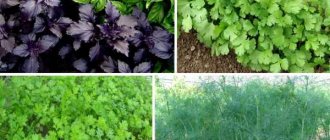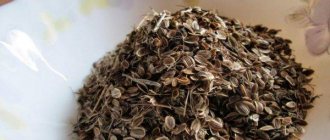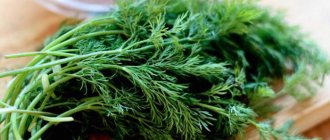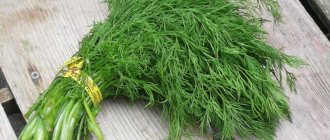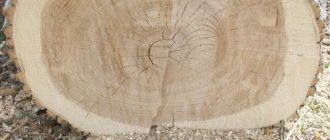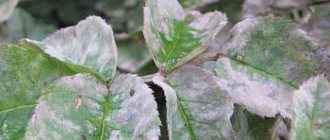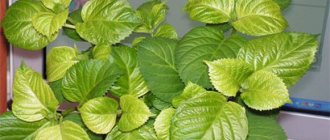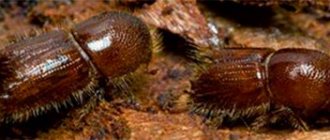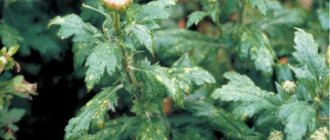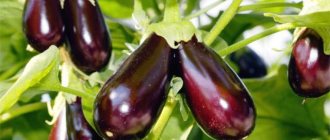Why does dill turn yellow, red, or gray?
Having seen strange changes in the shoots in his garden, the owner of the plot begins to wonder why the dill is turning red, and what to do now? Another, no less dangerous, situation is when the dill turns yellow or turns gray; Let's try to figure out what is best to do when you encounter such problems.
Yellow color indicates a lack or excess of water. To answer the question why dill turns red, you need to check the acidity of the soil where it is planted. Gray color is almost always a fungal infection. Fungus is the most common and difficult planting problem.
When diseases and pests are not to blame
It happens that even in the absence of threats of disease infection and pest damage to dill, the crop still grows unhealthy, lethargic, changes its rich color to pale and loses its aroma and taste.
Dill turns yellow
Yellowing of dill leaves may be due to several factors:
- soil that is too dry or waterlogged;
- using cold water for irrigation;
- excessive exposure to sunlight;
- dense planting;
- nitrogen deficiency in the soil;
- characteristics of the variety.
Carrying out proper care and applying the necessary fertilizers will correct the situation and eliminate the problem with the appearance of yellowness in dill.
Dill is drying up
With a lack of nutrients and impaired nutritional absorption, dill becomes weak, stops growing and dries out. To save greens, it is necessary to test the acidity of the soil and bring its level to a neutral state. Do not use wood ash, which reduces the quality characteristics of the plant.
Fertilizing can be done either by the root or by spraying on the surface of the green part of the dill. Use Superphosphate or other complex fertilizer.
Bitter taste
The reason for the appearance of bitterness in dill greens can be the banal overripeness of the plant. The culture contains bitter substances that accumulate in the leaves over time. The older the dill, the tougher it is and the more bitter its taste.
Violations in agricultural technology can also cause the appearance of an unpleasant aftertaste of dill.
When growing dill, pay great attention to studying preventive measures against diseases and pests. Taking into account simple procedures, you will save the harvest, preserve the taste and aroma of the green seasoning on the table. When fighting the manifestation of diseases and pests, remember that the choice of drug directly depends on the possibility of consuming the plant for food.
0
0
Copy link
Dill diseases
Dill diseases are mainly fungal in nature and are caused by the spread of harmful microflora on plants. Separately, it is worth highlighting the consequences of poor-quality soil cultivation.
Important! Insufficient soil aeration, lack of fresh air in closed ground, overwatering or excessive mineralization give impetus to the development of diseases.
Downy mildew
Downy mildew is detected by the appearance of chloratic spots on the leaves. The spots first turn yellow, then turn brown and turn into a grayish coating on the underside of the leaf.
The fight against peronosporosis begins with seed preparation. Before planting, they are heated to 50 °C and then washed with cool water. As a preventative measure, it is recommended to remove last year’s plants, or better yet, burn them and feed the soil with ash. At the first symptoms on the leaves, they can be sprayed with Bordeaux mixture. This effective remedy has a very simple recipe:
- 100 grams of lime.
- 10 grams of copper sulfate.
- 10 liters of water.
Powdery mildew
Powdery mildew is a white coating on the leaves and stem of dill, which is caused by the spread of a specific fungus. Such damage is typical for soil covered under a film and poorly ventilated areas.
After the plant turns white, it loses its taste and aroma and is no longer suitable for food. To combat, in addition to standard preventive measures, spraying with potassium permanganate or antibiotic drugs is also used.
See also
How to dry dill at home for the winter
Read
Fomoz
Phomasis is a disease caused by the fungus Phoma Anetti Sacc. All parts of the plant are affected, the marks look like long dark spots with black spots. The disease also destroys the germination of seeds. The fungus is spread by air from other umbrella plants located nearby or from unharvested remains of last year's harvest.
Verticillium wilt
Verticillium wilt is also caused by the fungus Verticillium dahlia. Most often spread through soil and insect vectors. When the mycelium germinates, it blocks the plant’s vessels, and the dill turns yellow in the sun and then dies completely.
Cercospora
Cercospora blight is a plant infection that precedes Phoma and is characterized by white spots that gradually become lighter. The disease is transmitted through poorly treated seeds, last year's shoots and parasitic insects.
Blackleg
Blackleg is a very common disease. It is characterized by high damage to plants planted in one area. It is transmitted through seeds, but is provoked by improper care:
- insufficient loosening of the soil;
- excessive watering;
- too tight fit;
- excess nitrogenous fertilizers.
During the course of the disease, the root stalk of young plants softens and dies. And then the whole plant dies.
Fusarium wilt
Fusarium wilt is introduced by another fungus. The plant, gradually, from the lower petals to the upper ones, changes color from green to brown and dies completely. Risk factors include excess moisture and overheating.
Prevention: popular methods
It should be remembered that the use of chemicals in the fight against diseases and pests of dill is extremely undesirable. The culture is eaten fresh, and there is a high probability of being poisoned by poisons and toxins. Therefore, preventive measures play a particularly important role in protecting the crop from various types of misfortunes.
Preventive measures against diseases of various types and insect pests include:
- Select a ventilated area with sufficient sunlight. Keep in mind that a lack of light will cause the dill to stretch out and become weak, and exposure to direct sunlight throughout the day will lead to burns.
- Disinfection of seeds before planting. It is enough to immerse them for 20 minutes in a slightly pink solution of potassium permanganate (1 g of manganese per 100 ml of water).
- Removing all plant residues from the previous season from the garden bed and treating the soil with an antifungal compound.
- Organize moderate watering to avoid waterlogging and waterlogging of the area.
- Loosening the soil to remove the dense crust of earth that has formed on the surface.
- Thinning the planting to ensure air access to each plant.
- Control of weeds - a place for overwintering fungal spores and a subsequent source of infection. They need to be burned down, or better yet, removed by the roots and burned.
- Digging up the bed in the fall so that low temperatures kill the larvae overwintering in the soil.
- Maintaining crop rotation helps prevent the development of diseases and the proliferation of pests in one place. The best predecessors of dill will be plants from the pumpkin, legume and nightshade families, but not umbrella crops.
- Removing coniferous vegetation or planting dill away from them.
- Taking into account the proximity of crops when organizing crops.
- Create a living fence by planting thyme, nasturtium, marigolds, and wormwood. These are natural pest repellents.
Pests
Pests are the second danger factor for dill plantings. A variety of insects are ready to attack plants. Pest control should begin in the spring - a period when insects are just beginning to emerge from their winter shelters and have not yet had time to lay eggs. The sooner you start processing the site, the fewer problems there will be during the season.
Umbrella blind people
A very common species of harmful insects, overwinters in last year’s grass. And in the spring, these small bugs crawl to the surface and begin to suck the juice from the young shoots of umbrella plants. After dill is attacked by blind insects, it begins to branch, and seeds are either not formed at all or in small quantities.
Striped stink bug or Italian bug
This pest attacks all plants, including dill. Once damaged, the plant usually dies, which is why it is so dangerous. It overwinters under the foliage and emerges at an average daily temperature of more than +10 ºС. In a year, 1-2 generations of insects manage to grow.
Aphid (lat. Aphidoidea)
Everyone knows green bugs that appear quite often on dill. They not only eat leaves, but also carry diseases, so it is necessary to get rid of aphids as quickly as possible. Its rate of eating leaves is simply enormous.
Carrot psyllid (lat. Psyllidae)
A small green fly that overwinters on coniferous trees, and in the spring begins to suck out the sap and lay eggs in young shoots. When it comes into contact with a plant, it releases a toxin that causes a change in shape (curly).
See also
Why dill does not grow in the garden, reasons and solution to the problem
Read
Dill moth
Butterflies appear in early May and lay eggs in the seeds of carrots, celery, parsley and dill. The larva eats the plant, forming a light web and destroying the seeds.
carrot fly
Fly larvae damage plant roots, which leads to developmental defects or death. The main reason for the appearance of these pests is the constant lack of change of crops grown in one place.
Caterpillar
A wide variety of caterpillar species eat plant leaves and not only prevent them from fully developing, but also carry fungal diseases. And although butterflies are wonderful, caterpillars are a real punishment for a gardener.
Traditional methods of pest control
Existing dill pests and methods of controlling them are based on the use of substances with a pungent odor. Insects have a keen sense of smell, so they immediately react to such changes. An affordable way to protect the area is laundry soap. For 10 liters of hot water, take 1 bar of grated laundry soap. The composition is boiled for 30 minutes. The prepared mixture is sprayed onto the trunk circle once every 15 days.
The second popular method is for summer residents to place insects on their property that feed on pests. Ladybug is a gardener's assistant. A small area for the spotted bug is being set up on the site. The third folk method is to treat the area with a decoction based on yarrow, chamomile, and sage. For 10 liters of water take 500 g of each component. Boil the mixture for 1 hour and then leave for 8 hours. For 1 m², use 1 liter of solution. The treatment is repeated every 5 days. The last two methods are effective in treating and preventing the development of insect pests.
Prevention and treatment of diseases
The most effective treatment is prevention. The struggle for the harvest will be greatly simplified if you follow a number of rules for the gardener:
- plant dill every year in a new place;
- dig the beds deeply in the fall;
- destroy last year's tops and leaves, best by burning;
- destroy wild umbrella plants, such as hogweed, in the vicinity of the site;
- control the degree of moisture in the beds, avoiding overflow;
- do not plant too often;
- disinfect seeds before planting using a solution of potassium permanganate.
If the plantings are still affected, you can spray the plants with one of the suitable compositions, but it is best to give preference to organic solutions:
- infusion of citrus peels (100 grams of peels per liter of water, infused for three days);
- infusion of onion and garlic (200 grams per liter of water);
- laundry soap dissolved in water (200 grams per 10 liters);
- tobacco infusion, (50 grams per liter);
- diluted ash (50 grams per liter).
If nothing helps, you can resort to special fungicides, copper oxychloride, Bordeaux mixture.
Preventive diseases
The first rule is that dill should not be sown too densely. The distance between the rows is 15 cm, and between each hole in the row is 10 cm. The second rule is that the seeds are pre-soaked in a saturated solution of potassium permanganate. Water treatments last 30 minutes. The water temperature is +45 °C.
Other preventative recommendations:
- as soon as the seedlings have reached 30 days of age, they are watered with any biologically active growth stimulant to increase immunity;
- regularly loosen the soil near the plantings;
- after the harvest is completed, the area is weeded and all debris is removed;
- collected waste is burned rather than stored, otherwise it will become a breeding ground for pests and fungus.
During the growing season, fertilizers containing phosphorus and potassium fertilizers are used. For 1 m² of plot take 1.5 kg of mixture. If you don’t have anything similar at hand, boron in a similar proportion will help. Botanists call for abandoning the use of nitrogen. Its benefits are doubtful, but it will bring a lot of problems.
Top dressing against yellowing and drying of dill
Fertilizing will help if the soil on your site is depleted or was not initially fertile. The following is used as fertilizing:
Organic fertilizers:
- river silt;
- peat;
- manure.
Before applying such fertilizers to the soil, they must sit for about a year, otherwise the application will only cause harm.
Inorganic fertilizers:
- saltpeter;
- urea;
- ammonia water;
- anhydrous ammonia.
For each fertilizer, the application rate must be strictly observed. The required amount can be determined either experimentally or by sending a soil sample to an agrotechnical laboratory to select the optimal proportion.
Fusarium wilt of dill plants
Fusarium on dill begins with the lower leaves, first the dill greens turn yellow, then the color changes to reddish or brown. As the disease spreads, it invades the upper tiers, and the plants gradually wither. The degree of infection can be judged by a cross section of the stem, the vessels of which may also acquire a yellowish, brown or red color. If the dill in the garden turns yellow, what should the gardener do?
The causative agents of the disease, Fusarium fungi, accumulate and overwinter in the soil. Therefore, soil pests can be carriers. The fungus can get into the dill tissue through careless loosening, as well as with nematodes. A risk factor for the development of fusarium is regular waterlogging of the soil, as well as elevated soil temperatures.
It is extremely undesirable to allow moisture to stagnate in the soil and soil pests to multiply.
Tips - how to get rid of aphids on dill
Due to the rapid reproduction of aphids, dill quickly becomes literally covered with insects. As a result, the greens do not develop, are deformed, with aphids, in addition, infections dangerous to the plant can be transferred to the dill beds, for example, harmful fungi, whose colonies on the greens look like spots of oily soot. What to do if aphids on dill pose a real danger to the crop?
If garden plants that do not have fruits ready for harvest, potatoes or ornamental crops can be treated with insecticides without fear, then spraying greens with chemicals is quite dangerous
Therefore, in order not to fight aphids on dill, much attention is paid to prevention, compliance with agricultural technology and crop rotation, as well as the use of biological products and folk remedies
How to get rid of aphids on dill so as not to lose the harvest, the greens do not lose their properties and remain safe for humans?
Preventive measures to combat aphids on dill
If you take time to remove weeds, dry stems of dill and other umbelliferous plants infested by similar types of insects, then the risk of crop loss from aphids will sharply decrease.
No less beneficial is a careful inspection of plants, especially the back of the leaves and axils, where aphids accumulate most often. Timely detected and manually removed individual pests will not be able to create a large population, and the plants will be saved.
Properly used ornamental plants will also help. Phytoncides of marigolds, Dalmatian and chamomile have a depressing effect on the pest. Cosmos planted next to dill beds, as well as lavatera, mallow and tuberous begonia, as well as a number of legumes, distract aphids from dill.
You can protect dill from aphid attacks using non-woven covering material of the lowest density. Such fabric allows heat and light to pass through, is light enough not to harm plant growth, but does not allow insects to penetrate and attach to leaves and shoots. How to treat aphids on dill to get rid of insects as safely and quickly as possible?
If aphids do appear on dill, the insects are washed off the greens with a powerful stream of water, and heavily affected parts of the plants are torn off and destroyed.
Since garden ants are responsible for the settlement of aphids, the accumulations of these insects in garden plantations cannot be ignored. Specialized insecticides will help in the fight against ants; they should be applied far from green crops.
How to treat aphids on dill?
After spraying dill with phytoverm, the bulk of aphids die within 2–3 days. In this case, the maximum effect lasts up to seven days, and in dry weather, Fitoverm can fight aphids on greenery for up to 3 weeks. How else can you treat aphids on dill? Enterobacterin, which has proven itself well at elevated air temperatures in the range of 28–30 °C, accumulates and exhibits its effect over the course of 5 days.
In the list of similar drugs, you should pay attention to biotlin
If modern means of combating aphids are used, greens can be harvested and used for food 5–6 days after spraying.
How to fight aphids on dill without endangering yourself and your family members? It is possible to get rid of aphids on dill without resorting to artificial means.
How to fight aphids on dill with folk remedies
Not only chemical preparations have a deterrent and inhibitory effect on aphids, but also many plants that can be found right there in the beds and flower beds.
In country conditions, when aphids are already on the dill, you can use good help - rich infusions of:
- tops of tomatoes or potatoes;
- chopped onions and peels;
- garlic;
- pharmaceutical chamomile;
- marigolds;
- yarrow herbs;
- celandine;
- hot capsicum;
- horse sorrel.
To prepare the infusion, you can use shag and mustard powder. It is good when such products are used in combination with a soap solution and agricultural practices.
Umbrella, other names: dill, carrot, anise - moth
An inconspicuous butterfly, the front wings are brown, slightly reddish-brown, up to 19 mm in span, the hind wings are gray. The genus Depressaria contains 109 species, differing slightly in appearance. The caterpillars are brown with a reddish tint, greenish between the segments. During the year, from one (in the north) to three (in the south of the countries of the former USSR) generations are hatched.
The seeds of crops of the umbrella family are affected: carrots, cumin, anise, dill, hogweed, coriander and others. Caterpillars eat buds and immature seeds, entwine umbrellas with cobwebs, fastening them together. Significant harm is caused only when the testes are noticeable.
Control measures
The destruction of wild umbrellas near seed crops, especially hogweed, helps as prevention. It is important to clean and thresh umbrellas on time. The need for chemical treatment rarely occurs; if necessary, treat with insecticides according to the instructions for the preparations.
What should I do to treat dill against powdery mildew?
This disease can affect dill plantings in any region of Russia, even if the plant is planted in a greenhouse.
It does not ignore dill’s relatives - parsnips, carrots. If greens are planted in a garden bed, then prolonged warm, humid weather can trigger the disease. The first thing that catches your eye on a diseased plant is the whitish mycelium on the leaves, reminiscent of a dense cobweb. Over time, the affected area becomes larger. Sick dill becomes sluggish, dry, and loses its aroma. The spores that cause the appearance of the parasite can easily overwinter in the remains of weeds and umbrella plants.
Treatment is carried out by spraying plants with a weak solution of potassium permanganate or copper oxychloride. Antibiotics also work well - Strepromecin, Penicillin or a mixture of them.
If the disease is noticed in time, single lesions can be removed using special medications or folk remedies.
Important! Do not get carried away with nitrogen fertilizers - their excess can lead to the appearance of a fungal disease.
Biofungicides today are the optimal means of combating fungal diseases. They contain live bacterial cultures that do not harm the plant.
Medicines that can be purchased at a specialty store:
- "Fitosporin" is a new generation biofungicide. It acts immediately as soon as it hits the affected area of the plant. Two treatments are carried out with an interval of three days. If necessary, you can add another one. The powder is soaked several hours before processing according to the instructions.
- "Bayleton" is a broad-spectrum fungicide. Penetrates the plant and begins to act 3-4 hours after application. In addition to fighting fungus, it also simultaneously reduces the permeability of cell membranes.
- "Tiovit Jet" is a fungicide and insectoacaricide. Non-toxic, effective and economical drug. The main active ingredient is sulfur, which upon contact with water forms a spray solution.
Folk remedies
Recipes from improvised means that can be used if the dill is covered with a white coating:
- Pour half a glass of ash into a liter of boiling water and leave the mixture for two days. Then strain, add 4-5 g of laundry soap, diluted with water to a pasty state. The resulting mixture should be applied to the affected plants twice at intervals of a week.
- Pour a third of a bucket of fresh cow manure with cold water and leave for three days, stirring from time to time. Then the solution must be filtered and diluted with ten parts of water. Fresh mullein is ready for evening spraying. For the next procedure you need to prepare a new portion.
- Half a bucket of weed, filled to the top with hot water, allows you to prepare fermented water for spraying. The mixture is infused for several days, then filtered - the solution is ready.
Did you know? People in the Middle Ages believed that the aroma of dill protected against witchcraft.
Harm to the plant
Aphids settle on young shoots and leaves of the plant; they first form clusters on the inside of the plant, as well as on the bottom of the dill umbrellas. In general, they fill those places where the surface of the leaves or stems is thinnest. Aphids stick to these places and begin to feed on dill juice.
As a result, it sucks out all the nutrients found in the plant, causing its tops to become deformed and begin to wither. In this case, the aphid leaves behind a secretion, they are called honeydew. This slimy mass not only serves as food for ants, but is also an excellent breeding ground for viral diseases and fungal diseases. You may also be interested in learning about how to fight aphids on currants.
Honeydew has a sweet taste, for which it received another name - honeydew, because of its sticky structure, which tightly envelops each leaf of the plant, photosynthesis in it is inhibited, and it dies.
Signs of defeat
There are sticky spots on the leaves of dill, and some of them have whitish scales, which can easily be confused with ash, but in fact it is an old shell that the aphid throws off.
If action is not taken immediately, the plant will become completely enveloped in aphids and their sticky secretions within a few days. If the plant is severely damaged, entire colonies of this insect will become noticeable. Green or black representatives will be visible on the inside of the plant. But what are the signs of damage to aphids on strawberries and berries, and how can you get rid of such a problem.
Why does it change color and grow poorly?
There are several reasons for the redness of a young plant:
- Increased soil acidity.
- Prolonged cold snap. It is not detrimental to dill, but leads to a change in the color of the leaves.
- Excessive watering. May lead to the development of fungal diseases.
- Thickening of plantings.
Violations in agricultural technology also lead to the fact that dill seedlings stop growing.
The leaves of an adult plant turn red when diseases appear:
- Cercospora blight is a fungal disease that affects all above-ground plant organs. Red and brown spots form at the site of spore penetration, which travel through the vessels of stems and shoots to the top and infect the seeds.
Advice
Seeds grown on a plant that has suffered cercospora blight are not suitable for propagation - they contain the mycelium of the fungus in a concentrated state.
- Fomoz (dry rot) is a disease caused by pathogenic fungi. The mycelium of such fungi reproduces on the surface of the plant, but in advanced cases it affects the root system. In this case, the lower leaves acquire a pink tint, then turn red. Often occurs due to a lack of boron in the soil. The plant dies within 10-14 days. It cannot be treated. Affected plants should be removed by the roots and burned.
- Fusarium is a rather dangerous disease caused by fungi, which, as they develop, saturate the plant tissue with a toxic substance. It starts with the lower leaves, which turn yellow, and after 1-2 days they turn red. When watering, spores travel through the vessels of the plant up the stem and infect it. The period of development of the disease from the first red leaf to death is 3-5 days.
- Rust mushroom. The spores of the fungus have different shades: from bright orange to red and brown. The growing mycelium covers the surface of the leaves, which is why they acquire the appropriate color.
When attacked by pests, the color of the leaves may also change. The appearance of red leaves is provoked by:
- A leafhopper is a small, jumping, sucking insect that feeds on plant sap. Brown spots appear in places where shoots are damaged.
- Aphids are small insects that can pierce the surface of shoots or leaves with their proboscis. They feed on plant sap and spread fungal diseases.
- The stink bug is a bug with a flat body and a hard, dense shell. Pierces dill shoots and umbrellas, which turn red at the site of damage.
If you plant dill at home now, will it grow?
Olesya
dill needs a lot of light, it’s better to plant parsley or celery, and the dill will grow frail and dead, you can stick beets in a pot and there will be greens
Alyona
Try it!
Elina Antonova
if the house is warm, then everything should work out, the main thing is more light
zluchka
will grow easily
Zubareva Svetlana
Easily.
New day
It will grow, just needs additional lighting. But, all the same, it will be frail.
Zvezdochka Yasnaya
I don’t know about dill, but the gladioli on my balcony haven’t bloomed all summer! Only the tops reached half the balcony 
*******
Don’t even strain yourself so as not to be disappointed. swam, I know.
Valentina Best
[link blocked by decision of the project administration]
Despite the fact that in most cities fresh greens are sold all year round, many people want to harvest from “their own beds”. This article was written for those who are definitely enthusiastic gardeners. Plus, your own greens taste better. :)
Dill. Family - umbelliferae. Homeland - Mediterranean. This annual herb is an aromatic green plant. The stem of dill is erect, the leaves are pinnately dissected, the color of the leaves and stem is green, the color intensity depends on the variety, the root is thin, spindle-shaped. An inflorescence is a complex umbrella consisting of small umbrellas containing flowers. The fruit is an achene, up to 5 mm long. The entire above-ground part of the plant is eaten. Dill is a cold-resistant plant (seeds begin to germinate at a temperature of +3 ° C). Dill plants contain a significant amount of vitamins, in addition, they are characterized by the presence of potassium, calcium, iron, and phosphorus salts in an easily digestible form.
In autumn and winter, dill should be grown indoors, on a window with high light. The optimal temperature for the growth and development of dill is within 16-17 °C, and for seed ripening 18-20 °C. Sowing dill seeds, like other green crops, is carried out in boxes or pots. To obtain a high yield, you should use light, humus-rich soils, preferably with a neutral reaction. For indoor conditions, the following varieties of dill should be used: Gribovsky, Kaskelensky, Armenian-269, Uzbek-243 and other varieties acceptable for home cultivation.
Sowing: To obtain greenery throughout the cold season, it is recommended to carry out stepwise sowing with an interval of 30 - 40 days. Seeds are sown on the surface of moist soil at the rate of 30-40 g per 1 m2, sprinkled with light humus (peaty) soil in a layer of up to 1 cm and lightly compacted. In a small box measuring 15 x 40 cm, you need to sow at least 3 grams. seeds With the emergence of seedlings, the plants are thinned out, leaving one plant 2-3 cm from the other.
Care: Watering should be done abundantly, especially during the period of seed germination and growth of young plants. Once every two weeks, fertilizing is carried out with concentrated liquid fertilizer. To obtain good dill greens during the period of SHORT DAYS and low intensity of daylight (December-February), additional electric lighting is installed. For additional illumination, fluorescent lamps LDTs (daylight) or LB (white light) with a power of 40-80 W and DRL lamps with a power of 250 W and higher are used. Lighting with phytolamps would be ideal. Lamps should be hung at a height of 50-60 cm. Supplementary illumination is best done in the morning for 5-6 hours.
Diseases and pests: The main pest of dill is the hawthorn aphid, which causes the leaves to curl and dry out. Of the diseases, the greatest damage to dill is caused by fusarium and powdery mildew, but under indoor conditions these pests and diseases are rare. To prevent dill diseases, use only sterilized soil.
After 40-50 days, you can use the leaves and individual shoots for food.
LANA
I planted dill in a box. I stood on the window all winter. He grew long and not very green. You can plant onions in water and they grow well.
))
You can easily grow dill at home
Nina Barabash
will grow next year in the summer
Causes and signs of appearance
Any caterpillar is the larva of one of the species of butterflies. Its biological tasks include intensive weight gain through nutrition. The larvae eat any plant tissue, so the reason for their appearance is the annual biological development cycle of the butterfly that parasitizes dill.
Signs of caterpillars:
detection of traces of their vital activity: deformed leaves, the presence of holes, cobwebs, sticky juice.
